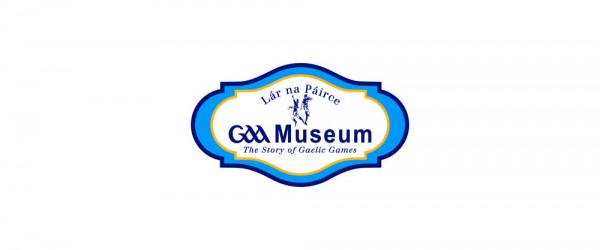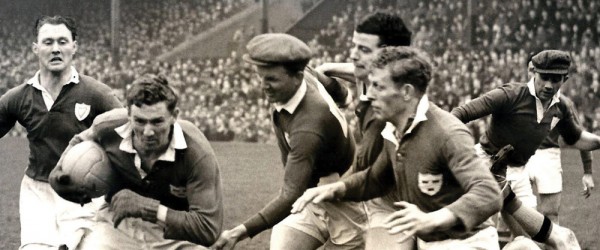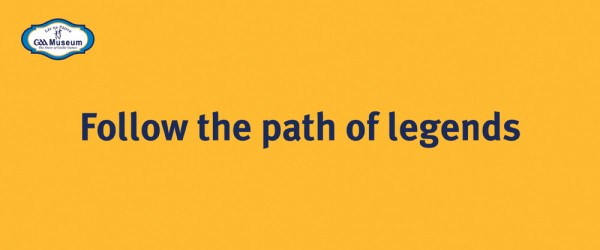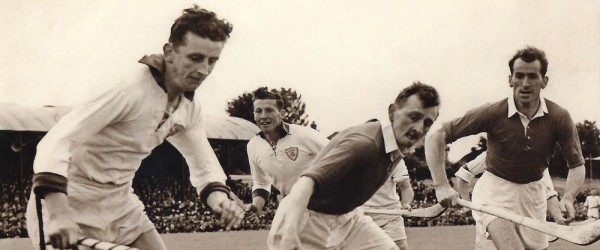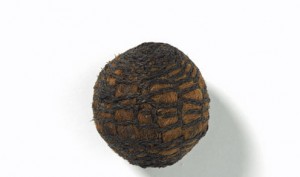4. The Hurling Ball – Sliotar
Hair Hurling Balls
These balls were used in earlier versions of the modern hurling game or in competitions such as the poc fada contests of today. The Museum ff Country Life, Turlough Park, Castlebar, County Mayo, has a fine collection of Hair Hurling Balls. Generally, hair hurling balls consist of a core of felted hair covered by a network of plaited cord made from the long tail hairs of an animal. Various materials were used depending on the part of the country, including combinations of wood, leather, rope and animal hair and even hollow bronze. Sometimes the core was of bone, timber, stone, with cork being used at a later stage. Most of these balls have been located in Munster.
One of these from Athea, County Limerick was aged almost eight hundred years and following a CT scan it was learned that it had a core of bone. This ball was found seven sods down in the bog during turf-cutting. Generally the hurling balls were made from matted cow hair with a plaited horse hair covering. The cow hair had been pulled off the cows’ backs. The balls would have been made in the summer when the cows were shedding their hairs, by rubbing the palms of the hands down the cow. The hair was gathered and rolled into a matted ball. Using spit, spittle and hair, it mats together. On the outside, intricate platting of horse-hair for the covering with 3.5 to 5.5 metres of horse hair used. Samples of fibres from the balls have also been radio-carbon dated. The earliest date range was 1157-1227 and the latest was 1663-1683. The design and style of these hair hurling balls did not change over centuries.
In the early days of the GAA, hurling balls (sliotars) were much larger than those in use today. At that time, there was no specific standard for the size or weight of sliotars. The man credited with initial standardisation of the sliotar is Ned Treston (1862–1949) of Gort, County Galway. He was selected to play in a match between South Galway and North Tipperary in February 1886. Prior the game, there was debate between the teams as regards the size of the sliotar. Treston made a sliotar at a nearby saddlery, which was used in the game, and went on to be a prototype for the standard sliotar used from then on.
Dimensions
In 1904, the official GAA rules set the minimum weight for the sliotar at seven ounces (200 grams) – about double the prescribed weight of today’s ball. At that time most games were characterised by the scoring of relatively few points. By the 1930s sliotars had been reduced to approximately the size we know today and higher scoring became common. The present regulations regarding the size, mass and composition are as follows:-
• The diameter is between 69 mm and 72 mm
• The mass is between 110 g and 120 g
• The rib height is between 2 mm and 2.8 mm, and width between 3.6 mm and 5.4 mm
• The leather cover can be between 1.8 mm and 2.7 mm and is laminated with a coating of no more than 0.15 mm
The McAuliffe Ball
During in the early decades of the twentieth century, the difficulty of developing a uniform and durable hurling ball that would retain its shape through sixty minutes of intense competition, especially in wet conditions, remained. The man who did most to solve this problem was Johnny McAuliffe, a native of Tullybrackey, Bruff, County Limerick. He was a hurler of note in his youth and was also known for his expertise as the ball mender for local hurling teams.
In 1919, Johnny moved to Limerick city and found a job in a bakery. He joined the then famous Young Ireland Club. Johnny retired from hurling in 1925, but he held an important role of mending the sliotars. This expertise developed into Johnny going into the business of manufacturing sliotars. The biggest advantage of the new McAuliffe sliotar was its water-resistant quality – unlike all previous hurling balls it did not become heavy in wet conditions. Soon he was making a variety of hurling balls suitable for clubs, schools and colleges, along with the standard sliotar for the Munster Hurling Championship. From his premises in Thomas Street, Limerick, sliotars were soon pouring out in large quantities.
Following the erection of the Cusack Stand in Croke Park in 1937, spectators complained about their inability to pick out the flight of a brown hurling ball against the background of a crowded stand. Inevitably, McAuliffe was the man requested to find a solution. In response, he produced the first white sliotar, which solved the problem of visibility within a crowded stadium. However, one difficulty remained – that of making a ball that would retain its whiteness when it came in contact with wet grass. Here, a Limerick tannery came to the rescue, producing the first hurling ball with a hard wearing, distinctive white finish, which was not only waterproof but also maintained its shape and colour. The new product was an immediate success and remains the model for the stitched, two-piece, white pigskin sliotar, with a core of cork, with which we are familiar today.
The construction materials also meant that the ball was only about half as heavy as Treston’s version. Most of the leather casings used in sliotar production today are imported from Spain
The O’Neill Ball
The O’Neill sports company was founded in 1918 by Charles O’Neill, based in Dublin’s Capel Street, specialised in the manufacture of footballs and hurling balls. It has progressed to being a leader in the field of hurling ball (sliotar) manufacture.
Lár na Páirce
Lár na Páirce museum in Thurles has an extensive collection of hurling balls from all the decades since the foundation of the GAA in 1884. It also has a replica of the ball used in the first All-Ireland championship in 1887. Also in Thurles, the traditional name for a hurling ball was not a sliotar, but a ‘tan’ ball. The association of the word ‘tan’ with tannery possibly explains its origin.
Acknowledgment: The assistance of Clodagh Doyle from The Museum of Country Life was invaluable in compiling this research.
